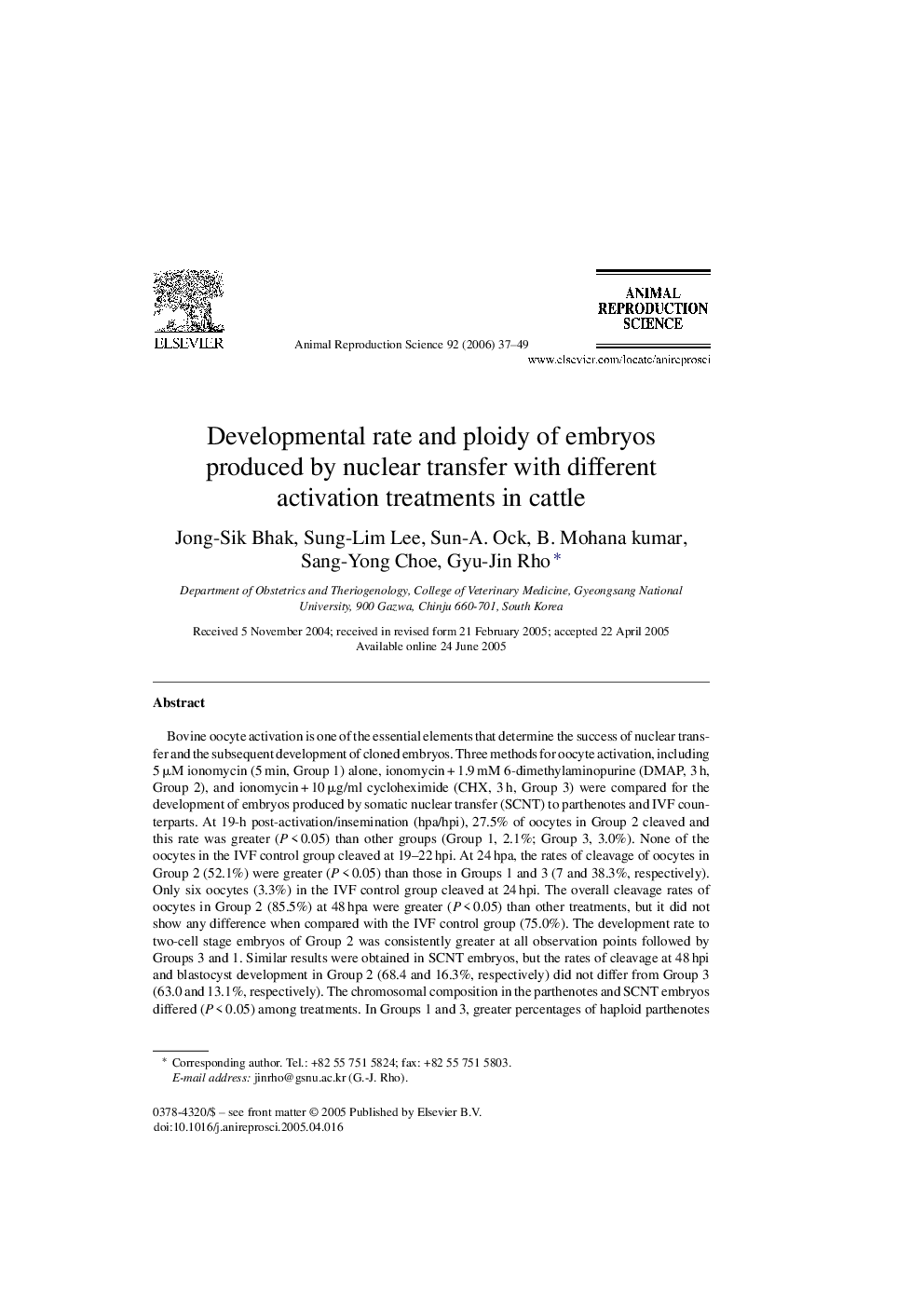| کد مقاله | کد نشریه | سال انتشار | مقاله انگلیسی | نسخه تمام متن |
|---|---|---|---|---|
| 2075135 | 1544831 | 2006 | 13 صفحه PDF | دانلود رایگان |

Bovine oocyte activation is one of the essential elements that determine the success of nuclear transfer and the subsequent development of cloned embryos. Three methods for oocyte activation, including 5 μM ionomycin (5 min, Group 1) alone, ionomycin + 1.9 mM 6-dimethylaminopurine (DMAP, 3 h, Group 2), and ionomycin + 10 μg/ml cycloheximide (CHX, 3 h, Group 3) were compared for the development of embryos produced by somatic nuclear transfer (SCNT) to parthenotes and IVF counterparts. At 19-h post-activation/insemination (hpa/hpi), 27.5% of oocytes in Group 2 cleaved and this rate was greater (P < 0.05) than other groups (Group 1, 2.1%; Group 3, 3.0%). None of the oocytes in the IVF control group cleaved at 19–22 hpi. At 24 hpa, the rates of cleavage of oocytes in Group 2 (52.1%) were greater (P < 0.05) than those in Groups 1 and 3 (7 and 38.3%, respectively). Only six oocytes (3.3%) in the IVF control group cleaved at 24 hpi. The overall cleavage rates of oocytes in Group 2 (85.5%) at 48 hpa were greater (P < 0.05) than other treatments, but it did not show any difference when compared with the IVF control group (75.0%). The development rate to two-cell stage embryos of Group 2 was consistently greater at all observation points followed by Groups 3 and 1. Similar results were obtained in SCNT embryos, but the rates of cleavage at 48 hpi and blastocyst development in Group 2 (68.4 and 16.3%, respectively) did not differ from Group 3 (63.0 and 13.1%, respectively). The chromosomal composition in the parthenotes and SCNT embryos differed (P < 0.05) among treatments. In Groups 1 and 3, greater percentages of haploid parthenotes (86 and 71%, respectively) were observed. In contrast, 84% of parthenotes in Group 2 had abnormal ploidy (44% polyploid and 40% mixoploid). In the case of SCNT embryos, Groups 1 and 3 had greater percentages of diploid chromosomal sets (77 and 70%, respectively), whereas 54% in Group 2 were polyploid or mixoploid. These results indicate that DMAP treatment after ionomycin greatly increases the developmental rates of parthenotes, but did not differ in blastocyst development compare with CHX treatment. However, DMAP treatment increased the time-dependent cleavage rate to two-cell stage embryos. Further, it greatly enhanced the incidence of chromosomal abnormalities in parthenotes and SCNT embryos. Hence, it is concluded that CHX combined with ionomycin is more desirable than DMAP for oocyte activation during nuclear transfer in cattle.
Journal: Animal Reproduction Science - Volume 92, Issues 1–2, March 2006, Pages 37–49